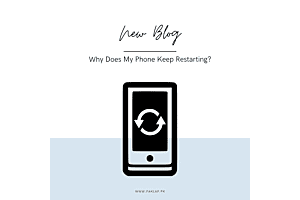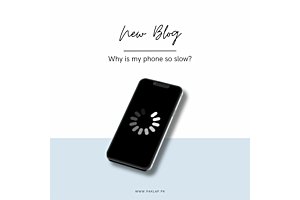THE LIFE OF SMARTPHONES
It arrived at a time when things were tumultuous for the OS market, but today it is almost on all devices other than Apple. It goes without saying that we have all had a sweet little bite from the Android family, since Cupcake 1.5 to Pie Version 9, till Google Android went back to being all classy and gave up on sugary monikers with its Android 10 that was launched in 2019.
Google’s mobile operating system has not only evolved as far as the names of the versions go, but they have improved in concept, appearance, and functionality. What we use today is obviously the finest version of the Android phone. It would be fun to see how the Android devices have served their users, and how they have competed in a very challenging market all these years.
Going back to the first Android phone, we see a clunky beginning, appearance-wise, for the Android smartphones with the Android 1.0. It was equipped with basic apps like Google Maps, Gmail, Calendar, and YouTube. Though with some features Android has been annoyingly stubborn, there are others that it has improved upon.
As we continue to compare how Android is now, we cannot deny that it has always been extremely user friendly. Despite the Android’s boring look, in the beginning, some features it has boasted since the day of its inception are the drag-down notification window, widgets, and the beautiful integration it had with Gmail.
Other phones and technologies did provide the facility to access mail, but all features of Gmail could not be used on handheld devices until Android brought a deep integration with it. The modern-day Play Store that we are so used to today, has also always been a part of the Android phones.
Then known as the Market, it launched with only a handful of apps. The system was devoid of any payment options, nonetheless marked a pretty “smart” beginning for Android.
It was almost within a year that Android treated us to the Cupcake which came after the Android 1.1, which wasn’t exactly a revolutionary step on the Android journey. The Cupcake turned out to be a multi-layered treat.
The tweaks that came with the Cupcake weren’t immediately noticeable, but some major developments included an on-screen keyboard! The user interface was improved, but most importantly the physical keyboard had disappeared.
Something hard to imagine now actually only became a reality with the Cupcake in the Android phones with the launch of video recording and playback. Android was fast emerging from its caveman days!
Then appeared the Donut, to some it was merely sugar sprinkled. In reality, it was all gooey inside and covered with chocolate and sprinkles on the top. The Donut brought what is a staple now, the quick search box that allowed access to the web, to contacts, and local files directly from the home screen.
The gooey goodness inside, that users were mostly ignorant of, was the ability for the Android to be used on different screen sizes and resolutions with this upgrade.
As we go over the timeline of the Android devices, we come closer to what we have today. Next in the alphabetical dessert menu to emerge soon after Donut, bringing wide-ranging changes in the Android world was the Éclair.
From live wallpapers to a thoroughly guided navigation system, quick contact feature, soft keyboard improvements, and whatnot! The Éclair was a real game-changer for the Android technology with its beautiful widescreen, and the most useful feature is the multiple account support where users could sign in to multiple Google accounts at a time.
With the arrival of Froyo, users saw a better and wider clipboard; the home screen was less cluttered, the pattern lock screen was replaced by a pin home screen (which is so better, I’m sure you’ll agree!), and the mobile hotspot support.
Gingerbread must have rolled out with a lot of pomp and show for the selfie lovers of today, with its front-facing camera. A novelty then but a necessity now, the front-facing camera was almost a dire need of the time and, therefore, the most exciting development for users. The cute little robot mascot was also visible now on one corner of the home screen.
Honeycomb, though a bit of an oddity, had nothing to do with phones but came to add sweetness to the world of tablets. Sans button and the traditional green replaced by a translucent, azure glow, multi-tasking was easier on this version, and widgets could be previewed on the home screen.
The Ice-cream Sandwich incorporated the features of the Honeycomb to the smartphone, and a minute but cool feature, the face unlock, was also introduced.
During this decade, Android moved swiftly from one rich, sweet experience to another, inching closer to the amazeballs Android experience we have today.
Jelly Bean brought the most revolutionary feature of the Google Now that has taken the shape of the Google Assistant over the years.
Kit Kat then presented a more modernized look of the Android smartphones, with a whiter home screen and a lighter color scheme for the apps. With Kit Kat, the Android phone could also take you to Google Now with a simple voice command of “OK Google''. With Lollipop the Android technology didn’t exactly sweep us off our feet. With Marshmallow too, there weren’t many drastic changes though the gap between Android and iOS was now narrowing.
The Nougat,, however, truly smartened up the Operating System for Android. Google Now was replaced with Google Assistant! The split-screen option was also introduced that allowed users to open and use two apps at a time. The phones are beginning to sound more and more like the phones of today, right?
The Oreo brought multiple multitasking options but bade farewell to blob emojis. Anyone have any memories of them anymore? In August of 2018, aromas of the Pie began wafting through the Android world. It can be called a significant update because of the numerous visual changes.
The best feature that was a need of the hour with the growing use of mobile phones was the “Digital Wellbeing”, that was meant to discourage user’s addiction to phones.
The Android 10 is a far cry from what the Android phone started as. We have access to all previous technologies combined, along with the completely button-free, dark mode phone of today with multiple themes to choose from.
It has made connecting with loved one's fun with peer to peer sharing, and many great new emojis. With its tenth version, Android celebrates its eleventh anniversary and prepares to surprise us with its upcoming version.





